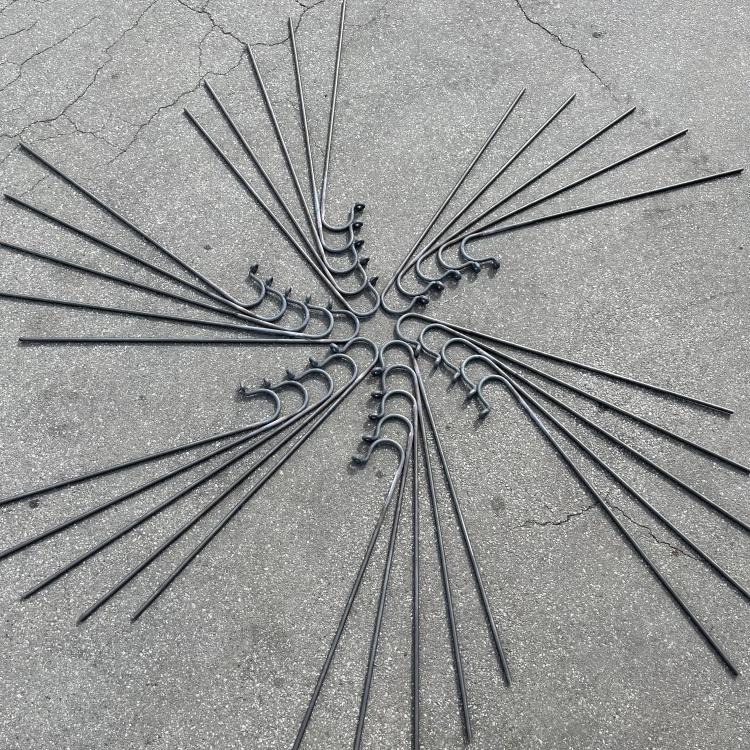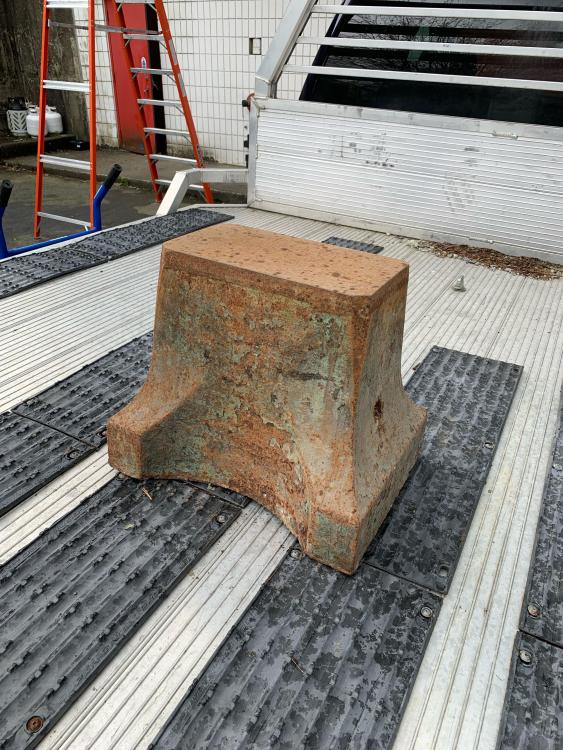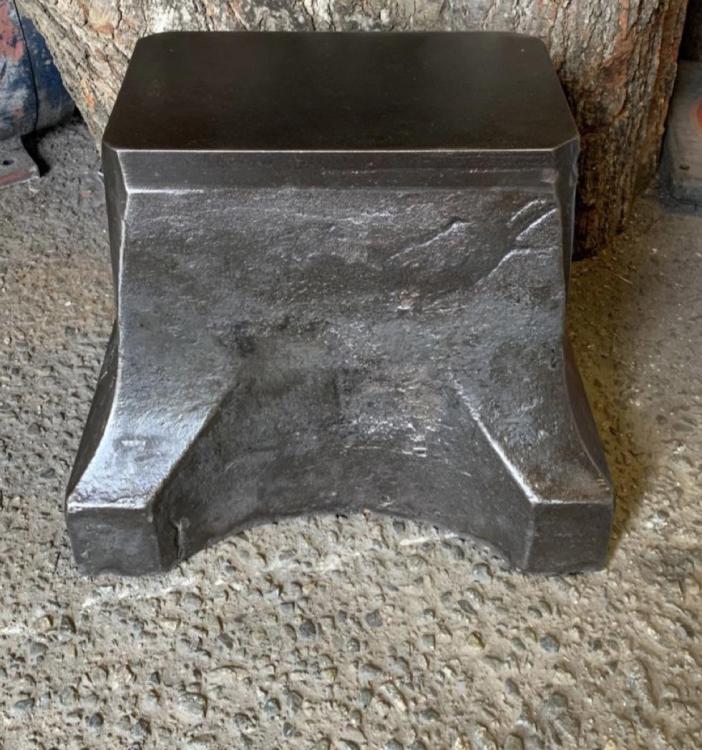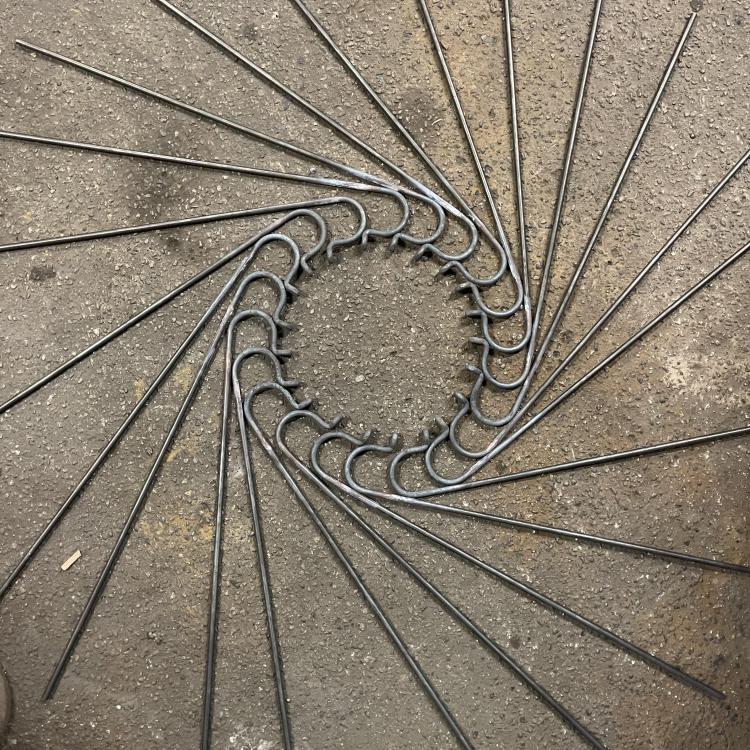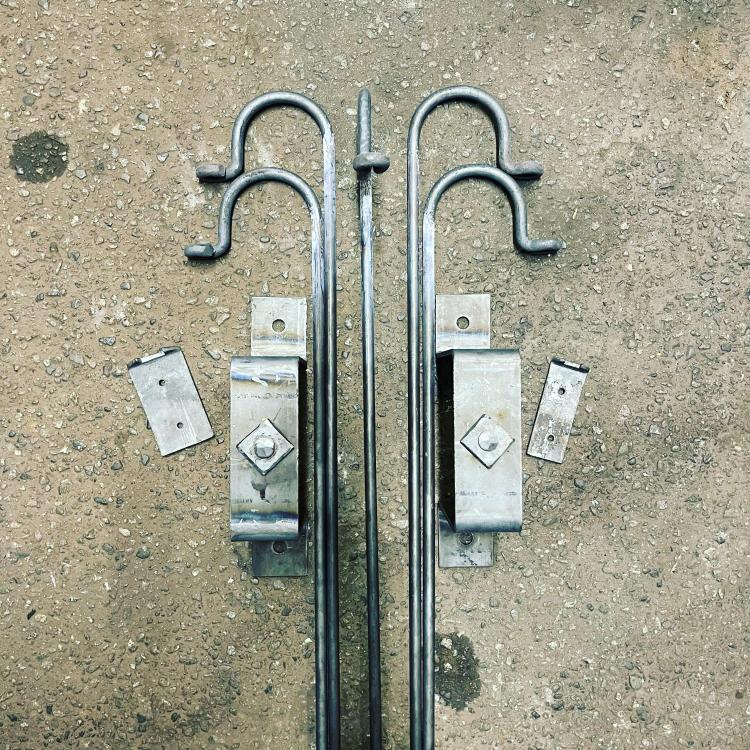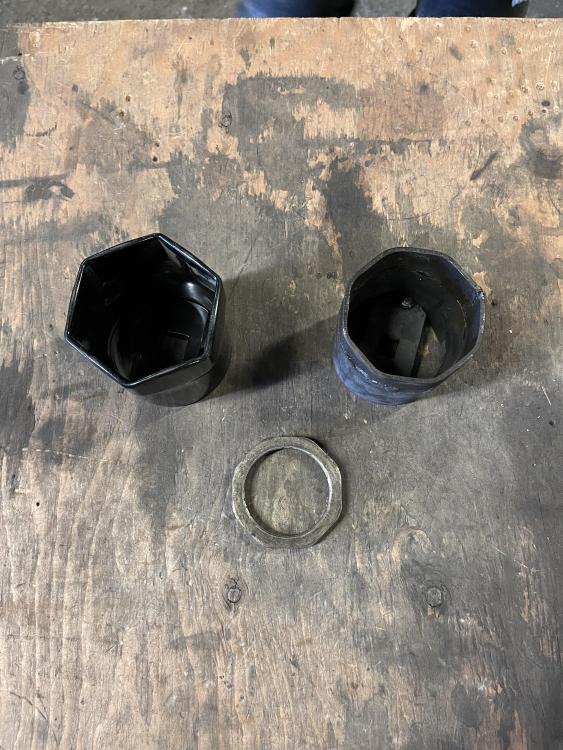-
Posts
60 -
Joined
-
Last visited
Content Type
Profiles
Forums
Articles
Gallery
Downloads
Events
Everything posted by Frf
-
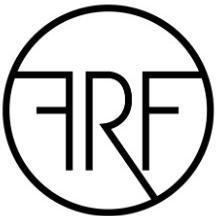
removing paint from an Anvil.
Frf replied to Sean Duffy's topic in Repairing and Modification to Anvils
Yes, usually cobalt salts. Not like the lead, cadmium, and zinc in paint fumes. The things in spray paint, you don’t want to breathe in. https://www.krylon.ca/document/SDS/en/724504015796_SDS_English.pdf -

removing paint from an Anvil.
Frf replied to Sean Duffy's topic in Repairing and Modification to Anvils
All the surfaces of an anvil are working surfaces/swages to the initiated. As well as noxious fumes, Paint can also add a shrill pitch to the ring of an anvil. -

removing paint from an Anvil.
Frf replied to Sean Duffy's topic in Repairing and Modification to Anvils
Boiled linseed oil fumes (after it is dry) aren’t toxic like burning paint fumes. -

removing paint from an Anvil.
Frf replied to Sean Duffy's topic in Repairing and Modification to Anvils
Try soaking in an electrolysis tub setup that reverses rust. Paint on an anvil results in constant burning paint fumes in your face. Use boiled linseed oil. -
Refflinghaus #58 is a true South German pattern, the Holland anvil listed as South German Pattern is actually a Swedish pattern.
-
Josh here, Roy’s apprenticeship was in Villingen-Schwenningen under Kunstschmiedemeister Klaus Walz. After 3 years of apprenticeship, Roy travelled as a Wandergeselle for 3 years and 1 day, working in forges under the old masters still working at that time, across Europe and down into Egypt. I have had 4 years of apprenticeship under Roy while building the forge together.
-

What did you do in the shop today?
Frf replied to Mark Ling's topic in Blacksmithing, General Discussion
-

What did you do in the shop today?
Frf replied to Mark Ling's topic in Blacksmithing, General Discussion
-

What did you do in the shop today?
Frf replied to Mark Ling's topic in Blacksmithing, General Discussion
-

Sichelschmidt und Schlasse (Sickle smith and lock)
Frf replied to Zozon's topic in Anvil Reviews by brand
Most likely it is a forged anvil. The S&S we have with a cast body has no hole on the bottom. We have not seen a cast German anvil with the bottom hole. -Josh Please note, we are a professional blacksmith shop operating under the instruction of a professionally-certified journeyman blacksmith. We are committed to furthering the professional blacksmith trade through cordial cooperation. -
Our firepots are about 4” deep with sloped sides. We make these firepots in house and teach professional firepot making as a 2 day workshop. -Josh Remove the borderline advertising.
-

What would I need (in terms of equipment) in my shop?
Frf replied to BugNugg3t's topic in Building, Designing a Shop
just playing around, ended up posting links to the same vid. -

What would I need (in terms of equipment) in my shop?
Frf replied to BugNugg3t's topic in Building, Designing a Shop
roy/frf hi jhcc, thank you for explaining this to me. r/frf making nails makes a better blacksmith ama about our hermann buckets hermann was my mentor in germany https://www.youtube.com/watch?v=yQSmneUvSSM -

What would I need (in terms of equipment) in my shop?
Frf replied to BugNugg3t's topic in Building, Designing a Shop
roy/frf thank you for pointing out the bandwidth situation. did not think of that. what do you mean by straight link? -

What would I need (in terms of equipment) in my shop?
Frf replied to BugNugg3t's topic in Building, Designing a Shop
roy/frf hi bug it sounds like you are a total beginner. thank you for your interest in the trade. my advice as professional blacksmith is as follows: find a local smith with a good reputation and volunteer as helper. first it will tell you if this is for you and second you will learn a lot. figuring this out by yourself is a waste of time and money. once you have determined that this trade is in fact for you, things will fall into place. find a/several mentors. invest time with them as much as you can, it will pay back big time. i learned this the hard way in my beekeeping endeavors. blacksmithing is a two man team effort and a lot of smiths here in north america unfortunately work alone. my guess is that a lot of them would welcome a dedicated helper with open arms. i know i would, but i am very lucky to have a very talented and dedicated apprentice. https://www.youtube.com/watch?v=ewHWxv6cLb4&t=196s after you are born, you have to learn how to crawl before you walk and then run. a lot of people try and do this process in reverse when they want to learn blacksmithing. you need patience. there are no instant reward scenarios in this. blacksmithing is the real world. you cannot fake it. and that is the beauty of it. it is real. ama. roy/frf -
roy/frf hi frosty. we custom make and fit all our hammer handles. we use ash instead of hickory. much easier on the joints. the ash has some kind of shock absorbing capability. try it out, you will like it. i spend a lot of time during our classes explaining and demonstrating the proper holding of the hammer to our students. for the trade, roy from frf
-
roy here from frf hi frosty the man in the attached video in the post answering twisted willow, is the son of oskar hafen, i think his name is andreas. i posted the video to show twisted willow the smokehood, which is visible at 0:24 into the video where i got my inspiration from. i am a cofounder and coowner of fraser river forge in vancouver, bc, canada. my reply was in relation to the post by twisted willow who asked if the design of our forgetable and smokehood was mine. design yes, idea no. so, i/we from frf are ready to be regular contributors to this forum. my goal especially, since i am getting on with age, is to pass on the skills and knowledge of the blacksmithing trade. in germany, where i come from, it is mandatory to pass on the skills since the skills are only borrowed for your lifetime, you do not own them. the blacksmithing trade is the more important part of the equation and it is my responsibility to do everything possible to further it and keep it alive. currently, we work 4 firepots max at a time, the 5th has not been installed yet and will serve more of a ceremonial role. it will be in the center of the forgetable. we just did not get around to make it yet. we make our own firepots and we offer classes on making them. this here is a video of me and josh, from fraser river forge, where i explain our take on blacksmithing classes. for the trade. ama. roy from frf.
-

What did you do in the shop today?
Frf replied to Mark Ling's topic in Blacksmithing, General Discussion
roy from frf i did nothing today. day of rest. -
roy here from frf hi tw the forge actually has 5 firepots, 4 are visible, the 5th will be in the center. i designed the whole setup together with the smokehood. the idea is not mine, i picked that up during my journeyman travels. i worked at oskar hafen's shop in meckenbeuren in southern germany in the late 80's and he had this kind of setup. the hood on his forge was actually mobile and could be moved up and down. you can see his shop at 0:24 in this video. the man in the video is his son. he was a very smart man. unfortunately he already passed away. he was good friends with my apprenticeship master klaus walz. they were active together in the south german artist blacksmith association. the forge is designed the way it is, so you have access from all sides and you can actually put a heat on even very wide and/or long pieces. the forgetable is also close to the height of most of our anvils and so you do not need an extra support which always tends to get in the way. the earliest mention of the forge being designed/positioned this way i found in the max metzger book, where he recommends putting the forgetable in the center of the shop, if at all possible. for the trade. ama. roy from frf
-
If the anvil comes with a 1/8” radius new, working to keep that radius as sharp as original and not increasing the radius through “dressing it” as per the original question would mean that a 1/8” radius is considered sharp when discussing german anvil edges. My anvil pictured has an inconsistent radius due to 4-5 professional careers of wear on it for 100+ years, not because someone dressed it from a 1/8” radius. I posted a picture of the hardy tool I use to replace the missing sharp edges on my anvil. How is this confusing or inconsistent? -Josh
-
Reread my post yesterday at 9:16pm, it is 1/8” radius I am talking about. This is what the anvils come with. -Josh
-
Watch how Roy uses the edge of the anvil to set down and define the tong parts. A square, small radius edge makes this job much easier. If a larger radius is needed, you use the round horn. “What are they making? I like the forms and look.” Ox shoes -Josh
-
A pleasure to make your acquaintance Thomas, it is helpful for us to know the audience with whom we are speaking. What kind of work did you do in your smithy? Was this a full-time occupation? Have you read Die Kunstschlosserei by Max Metzger? -Josh
-
Take a look at this video at 2:43, this is why you want a sharp edge to your anvil -Josh
-

What did you do in the shop today?
Frf replied to Mark Ling's topic in Blacksmithing, General Discussion

